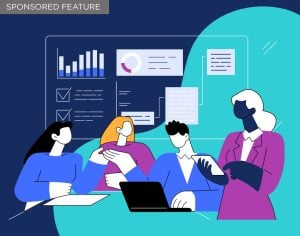The government-backed Recovery Loan Scheme has got off to a slow start. Andrea Reynolds, CEO at Swoop explores why and explores options for businesses that are getting back to normal
So many businesses spent the last two years fighting fires, it can be hard to step back, let the smoke clear and remember that there used to be this thing called ‘planning ahead’.
The Recovery Loan Scheme (RLS) was touted by the government as a lifeline to businesses, but does this claim stand up to scrutiny? And, having recovered (or at least begun the journey towards recovery), what happens next?
This year, we asked our SME customers what they thought of the RLS and the results were not flattering to the scheme’s creators. One respondent captured the exasperated mood with their response:
Does it really take six weeks for lenders to understand the government’s Recovery Loan Scheme? Why, on announcement, were there only 4000 enquiries / applications across the entire UK?
Why indeed? Rene Carayol MBE, commenting on the results in the report observed:
I think [the government has ] done a good job of marketing the business recovery and bounceback loans. I think they’ve purposely done a less good job on the third generation of recovery loans. You couldn’t open the business press last year without seeing full-page ads for business support from the government. You don’t see that level of coverage now, which makes me wonder if the Chancellor has lost his voice a bit within the cabinet.
Further, we found a sizable knowledge gap among respondents that the RLS even existed: we asked, Are you aware of the new Recovery Loan Scheme from the UK Government? Over a third – 35 percent – of respondents did not know what it was.
For a scheme set up expressly to help this market, it is a failure of communication. For further insights, you can download your free copy of the full report at https://swoopfunding.com/surveys/
What is the next step for SMEs?
The next step towards stability must be for SMEs to get their spending under control and ensure that they are back in charge of the purse strings.
Naturally in difficult times, businesses did what needed to be done and took out the loans that were available to cover the immediate costs that arose in an emergency. Speed of delivery and survival of the business were often more important than the interest rate.
Now that the dust has settled somewhat, it’s time to think again about those loan products taken out in extreme circumstances and make sure they are not more expensive than they should be.
If you used your CBILS /Bounce Back to purchase assets then now is an excellent time to take stock of your loan servicing costs and consider refinancing away from the CBILs lender in favour of a lower rate elsewhere.
The fact is that no business should be struggling to find funding at this time, whether it is with the RLS or some other means of financing. Similarly, no business should be shy about getting the best deal they possibly can.
Those that have survived have reasons to be optimistic. It’s time to demand a better deal, get lean and face the future armed for the incoming opportunities.
“
Share via:


















































